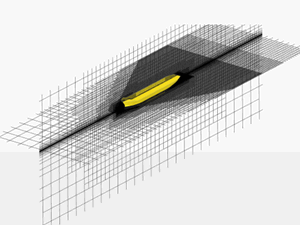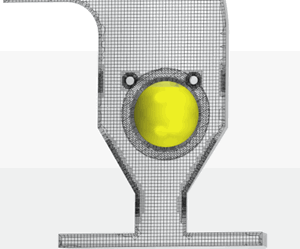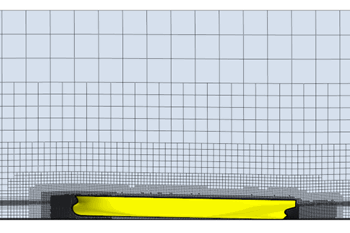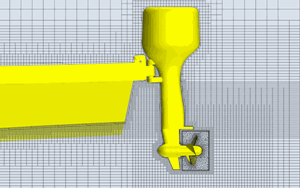DFBI Workflow
A DFBI (Dynamic Fluid Body Interaction) motion, different from a prescribed motion, solves the 6-DOF body movements resulting from the surrounding flow as well as the additional forces and moment. To set up a DFBI simulation, you first define a DFBI motion, set up a 6-DOF body, and then choose a simulation approach which realizes the movement of your 6-DOF body.
-
You can approach a DFBI setup in several different ways. Choose the one that
best suits your application:
DFBI Simulation Approach DFBI Motion for All Region(s) Combining DFBI Motion with Overset Combining DFBI Motion with Morphing Combining DFBI Motion with Sliding Interface Description The 6-DOF body and the outer region(s) move rigidly together. The 6-DOF body is modeled in an overset region, which can freely move in the background region. All degrees of freedom can be activated. The benefit of applying DFBI Embedded Rotation is that the overset region has no relative translation to the background region. Therefore, less mesh must be refined in the background region due to the translational trajectory of the 6-DOF body.
The 6-DOF body's movements are realized through mesh morphing. All degrees of freedom can be activated. A sliding interface is another way to allow DFBI cases with differently moving regions on both sides of the interface. Most popular examples are: - Ship with propeller
- Ship on waves with DFBI Embedded Rotation motion.
DFBI Motion Type - DFBI Translation and Rotation
- DFBI Translation and Rotation
- DFBI Embedded Rotation
- DFBI Morphing
- DFBI Embedded Rotation, see Using DFBI Embedded Motion with Sliding Interface
- Superposing Motion on a body motion (e.g, rigid propeller attached to a boat), see Adding a Superposed Motion to a 6-DOF Body
- DFBI Morphing (e.g, deformable propeller attached to a boat), see Deformable DFBI Bodies
Example 



- Creating a 6-DOF Body.
- (Optional) Adding an Superposed Motion.
- (Optional) Coupling DFBI Bodies.
- (Optional) Setting Up Body Constraints.
- Setting up DFBI Post-Processing.
- Run the simulation.
For practical examples using DFBI, refer to the
following tutorials: